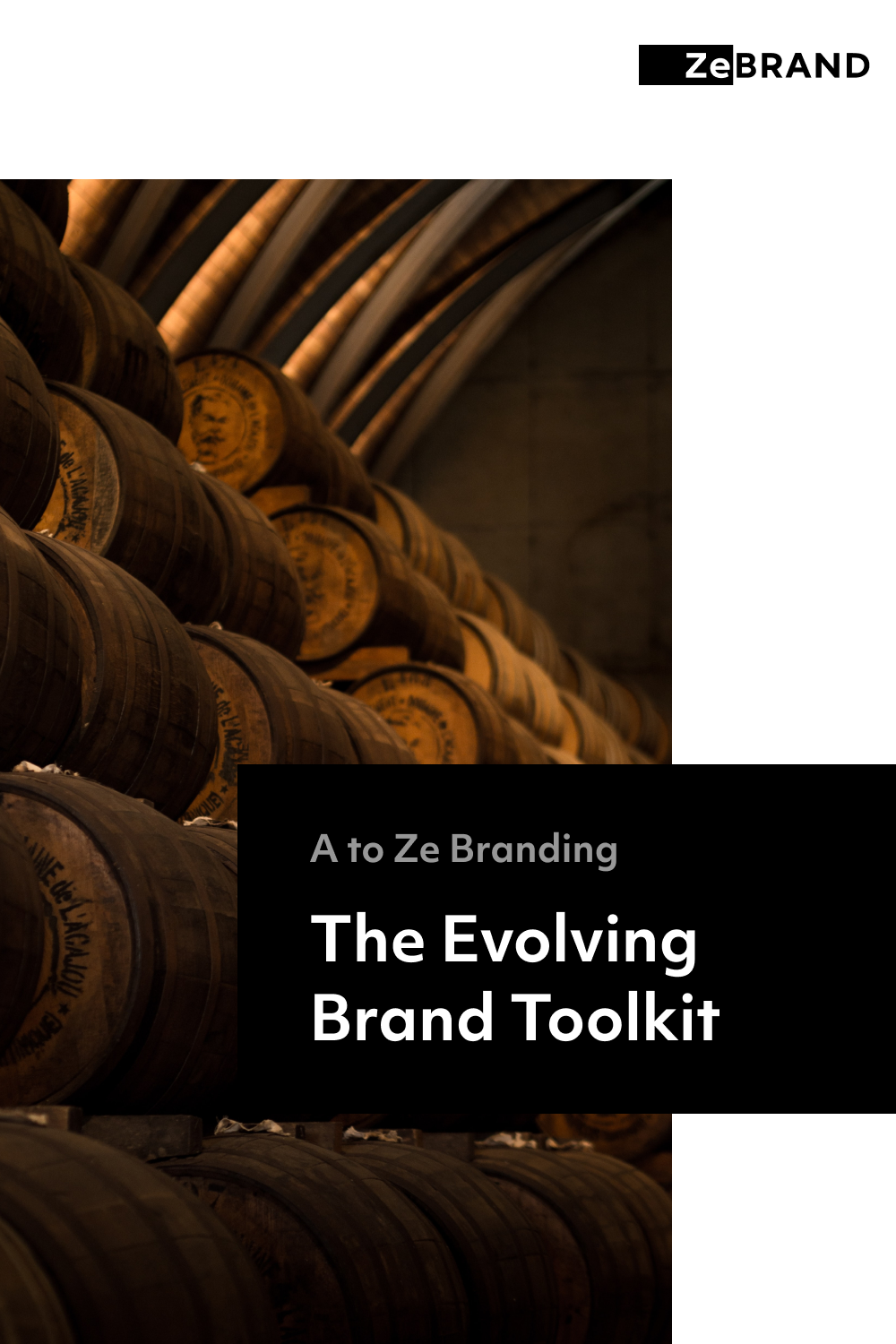The Evolving Brand Toolkit

The origins of 'branding' date all the way back to 4000 years ago. Back then, people literally 'branded' their livestock to indicate ownership.
At ZeBrand, we believe your vision deserves to be seen and realized. In this content series, we help you use brand as a tool to power up your business and jumpstart your growth.
Welcome to Part 1 of A to Ze of Brand Building -- 'The Evolving Brand Toolkit'.
The Birth and Evolution of Branding
What is brand and how can it be used as a tool for business growth? To understand it in context, let us delve into the history and evolution of branding.
Brands are all around us—from apps to cosmetics, corporations to charities, destinations to prominent celebrities, we are surrounded by brands—in name, in the way they look, and how they feel. That’s how useful brands have become in shaping the world around us.
However, people have very differing ideas about what a brand is. Some say it’s a logo, some say it’s the mission, others say it’s the impression that it creates. At any one point in history, brands assumed one or more of these definitions. The one commonality is that brand has always been a driver to help organizations set themselves apart and, in doing so, drive business growth, economic progress, and cultural evolution. So what elements are involved in a brand? To answer that question we’ll have to go back in time.
The origins of brand date all the way back 4000 years ago, when society and populations were getting bigger and bigger through agriculture. Brand was a word of Old Norse origin that meant ‘fire’, that inspired the concept of literally using fire to mark ownership onto livestock. By the 16th century, the practice of marking ownership on wine barrels and wine crates was well underway—a sign not just of ownership, but to indicate origin and assurance of quality. It’s this practice that developed the term for what we know today as ‘branding’.
It wasn’t long until these marks of provenance and ownership became more and more elaborate. In the 14th century, a new word came into widespread use: designare, a word with Latin roots that meant ‘to signify and to shape’. This popularized family crests, national flags, the marks of guilds—deliberately designed symbols to communicate loyalty and belonging to a cause. Today, brands are still indicators of trust. Trademarked and protected, they tell you who it’s from and what you’re buying into. This is when the very first elements of branding—names and logos—came into focus.
As the Industrial Revolution began to take place in the 18th century, brands took on a new significance. Steam engines and new machinery were having a far-reaching impact on creating growing economies. This rallied more people into factories to work longer hours and increased production and output. As a larger volume of goods were produced and as people began to earn the income to purchase them, the scene was set for a new era of consumerism and brand.

Photo by Aliaksei Lepik on Unsplash
In times of abundance, the question is no longer where to buy something, but which thing to buy. With the proliferation of choice between products came a need for a differentiator: the brand story. This story had to be communicated through visual and verbal elements, in packaging and advertising, to trigger a buyer’s emotions. The product was no longer just about the product: P&G released Ivory Soap, a soap that didn’t just clean but sold the idea of ‘purity’. Levi’s mass-produced its iconic blue jeans as symbols that spoke to the durability and mythology of the miners’ uniforms. And Coca-Cola was selling its iconic beverage that promised to bring people not just sugary goodness, but ‘happiness’.
As brands came into the forefront of life, the concept of 'corporate identity’ was born. It ensured that every single interaction customers had with a company strengthened the associations and value of its brand. At this stage, brands had adopted their own financial value, and brand design—the crafting of visual and verbal elements—reached its peak. Logos, iconography, imagery, color, typography, and tone of voice all became staple elements of a ZeBrand Kit as they still remain today.
Now, in the 21st century, brands are defined largely by two forces: globalization and rapid technological advancement. Vast advances in computing and internet-enabled devices has made the world more and more interconnected. Information and products from halfway across the world are now available in an instant, and the most complex of services are accessible at the palm of our hands just one click away. Choice is abundant now more than ever, raising customer expectations and demand. To keep up, brands not only have to flex from physical to digital to behavioral contexts, they also need to constantly defy customer expectations by creating new and different points of interaction. For this reason, tangential considerations like the scent of a store, immersive installations, or social media content are increasingly intertwined and work together to sharpen and define our perception of brands. Welcome to the dawn of Experiential Branding.

Photo by Kevin Rajaram on Unsplash
So there you have it. From humble beginnings as marking agricultural property, all the way to creating stories and a world of experiences that engage the senses, the definition of branding has evolved and expanded over time. But how do you make the most of branding and its possibilities? How do you bridge business and brand for it to work?
That’s what we’ll be tackling next on our series, the A to Ze of Brand Building.
A to Ze of Brand Building is a 10-part series about all things branding, with an eye to using branding to engage your customers and grow your business. Continue on to Part 2: Putting Brand at the Heart of Your Business Model.



